On a warm, sunny California day, I had the opportunity to spend time with students and staff at The Bridge School. It was a casual time for me to sit near the instruction that is offered to an intimate group of students who have complex needs. Many of these students have cortical visual impairment (CVI). Since 2012 The Bridge School has embraced the principles of CVI which began with learning and implementing The CVI Range. So now, in 2023, the process of addressing supports necessary for creating visual access have become instinctive. Environments, materials, and partner behaviors are seamlessly applied.
My first experience in the school was to order morning coffee from the preschool coffee shop. Obviously, concepts associated with literacy, numeracy, motor skills, and language were carefully planned. The “barista” approached the customer order window in her wheelchair to take my coffee order. Using AAC, the order was discussed relative to choices for add-ins of milk and sweetener.
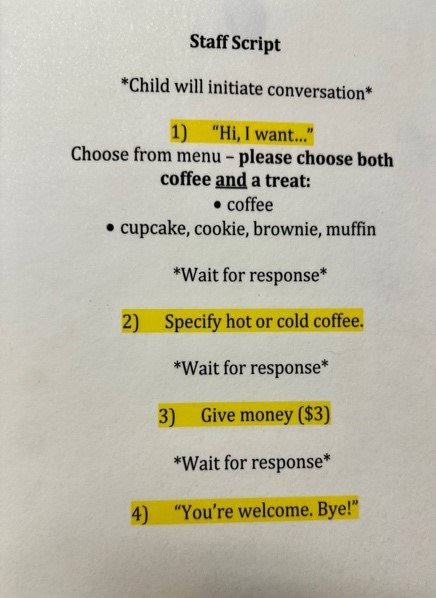
Coffee was prepared by another student and ultimately delivered to the pick-up window matching the finished product to a photo of the customer. Lovely. Great. But what does this all have to do with CVI? Partners were all dressed in black or neutral, non-patterned clothing. The coffee shop was devoid of extraneous visual information. Red bubble words paired with non-glare laminate photographic images were placed at eye level and with ample spacing between words. When coffee-making materials were offered to the student, the partner permitted ample time for visual latency. At no time were multiple adults speaking to the students and there were no unnecessary background sounds.

Later, I sat in on a music lesson, review of the daily schedule, and letter work. Students were gathered in a semi-circle, all using multiple types of AAC (adapted to meet a child’s visual needs). Adults were seated nearby but did not interfere with students’ efforts unless the student indicated a desire for help. The students with CVI had differing levels of functional vision/CVI Range scores. This was clear based on the levels of complexity of AAC display, position or distance from instructional materials, and degree of light, movement, and color paired with the target. One student was unable to visually locate the large screen even though it was less than 4 feet from his position. A black tri-fold custom made box-like occluder was used to customize access. A professional sat at his side and presented the item “that starts with the letter p” paired with light, in an off-midline position, and with quiet wait time. The student slowly turned, looked, and was quietly offered salient visual features of the target item, “paint”.

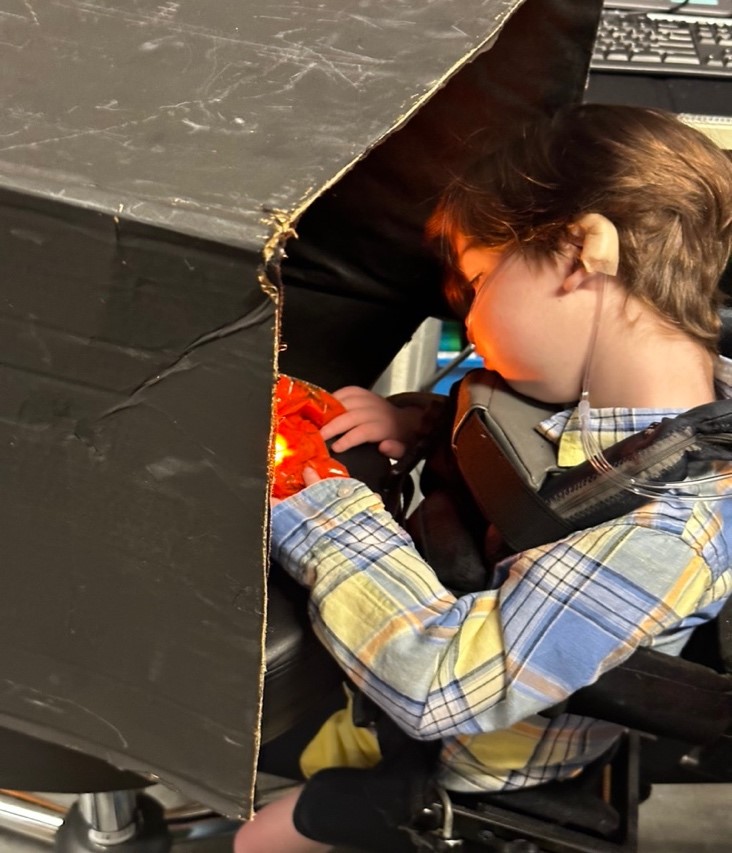
Paint from the bottle in a clear bag, paired with light and movement & off midline presentation.
The letter of the day was “p”. A student was asked to locate the letter of the day which was positioned 5-6 feet away. A Roman-bubbled letter was placed on a lightbox for the student to discover as a ‘kick-off” to the lesson. Initially, the student seemed to have difficulty finding the backlit letter. Without discussion, an adult stood up and changed the complexity of the room by turning off one of the lights further dimming the room light. The student now noticed the lighted, slightly moving target, pivoted, and moved directly to retrieve the letter of the day.
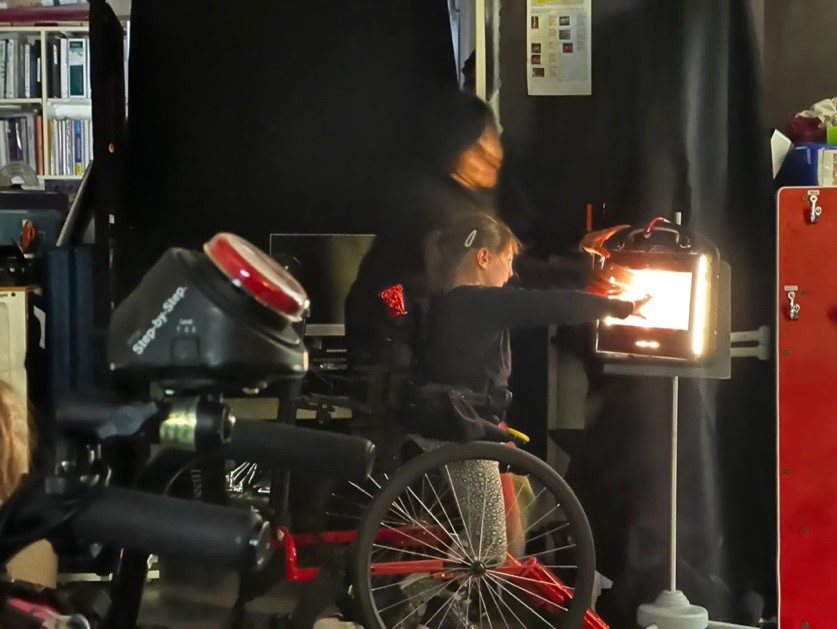
Finding the letter of the day.
During this literacy lesson, another student used eye gaze technology to select images of various items that would represent the sound of the letter p. Once the student chose an image of an item, the physical object was offered, again, paired with light, color & movement against a black background. The “p” object was also reinforced using of a backlit image or video. Salient features of the image were described, and a red shiny, mylar-tipped pointer was used to highlight the defining, salient features.
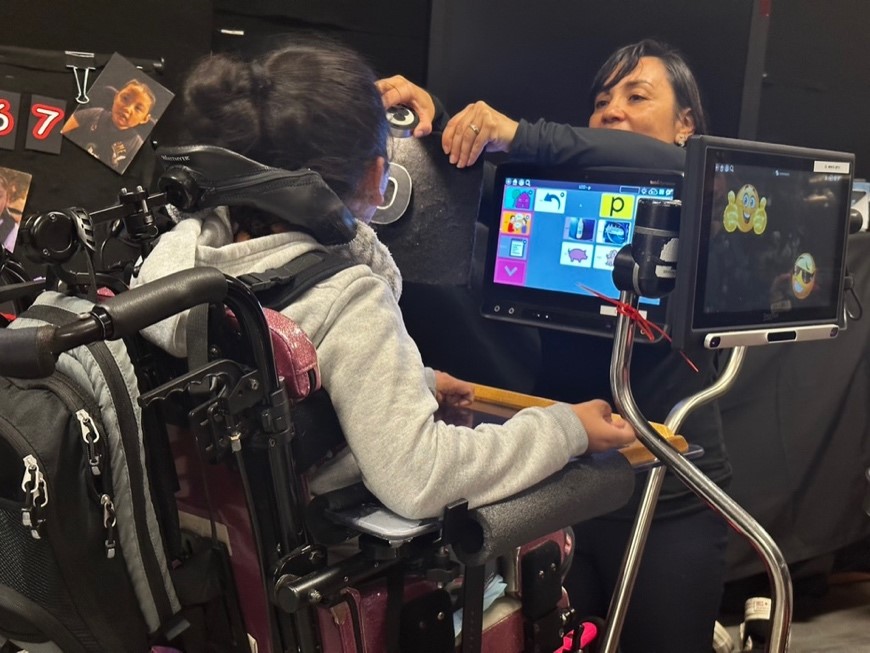
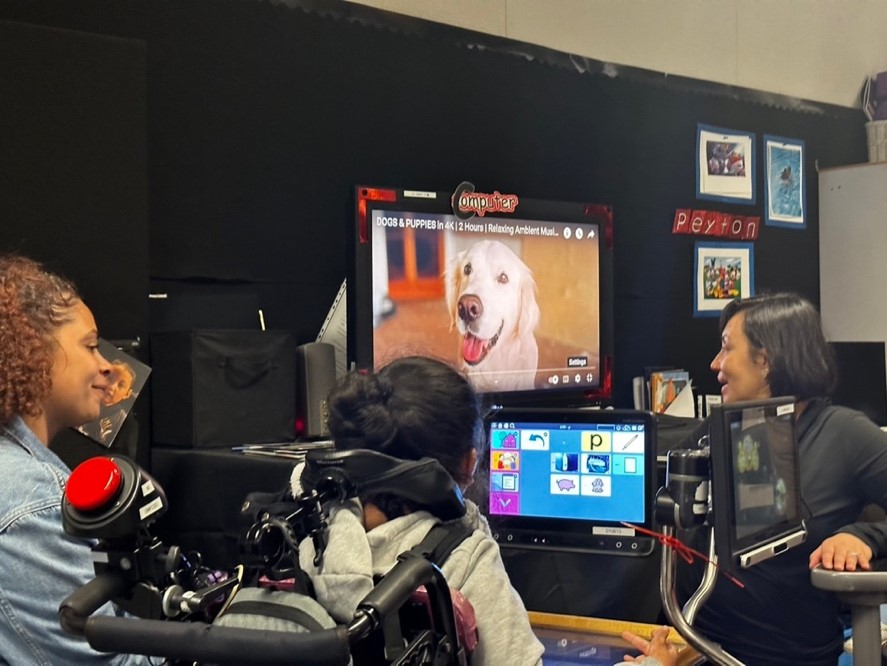
What does all this mean for a student with CVI? To the untrained person, the CVI accommodations may appear as a wash of rooms without unnecessary decoration, low light, and adults who don’t talk in loud voices. But to me, I saw an environment rich with intentionality and a constant attention to a child’s right to have access to learning, social engagement, and self-direction. I never saw a single hand over hand interaction, or an “opt out” of an activity that was deemed too advanced. I saw the visual and behavioral characteristics of CVI seamlessly infused and individualized in an instructional dance so fluid, it appeared to be ballet.
The real lesson for me at The Bridge School is that excellence in CVI programming is more than possible, it is a mandate. It can be achieved. It must be achieved. The Bridge School is of course, special. But I would challenge all of us to recognize that meaningful, effective, accessible education is achieved when there is a belief in the innate ability of all children regardless of the complexity of their needs. That knowledge of the principles of CVI is not an occasional therapy, but an all-day obligation owed to every baby, child, adolescent, and adult we are honored to support.
Christine Roman Lantzy
